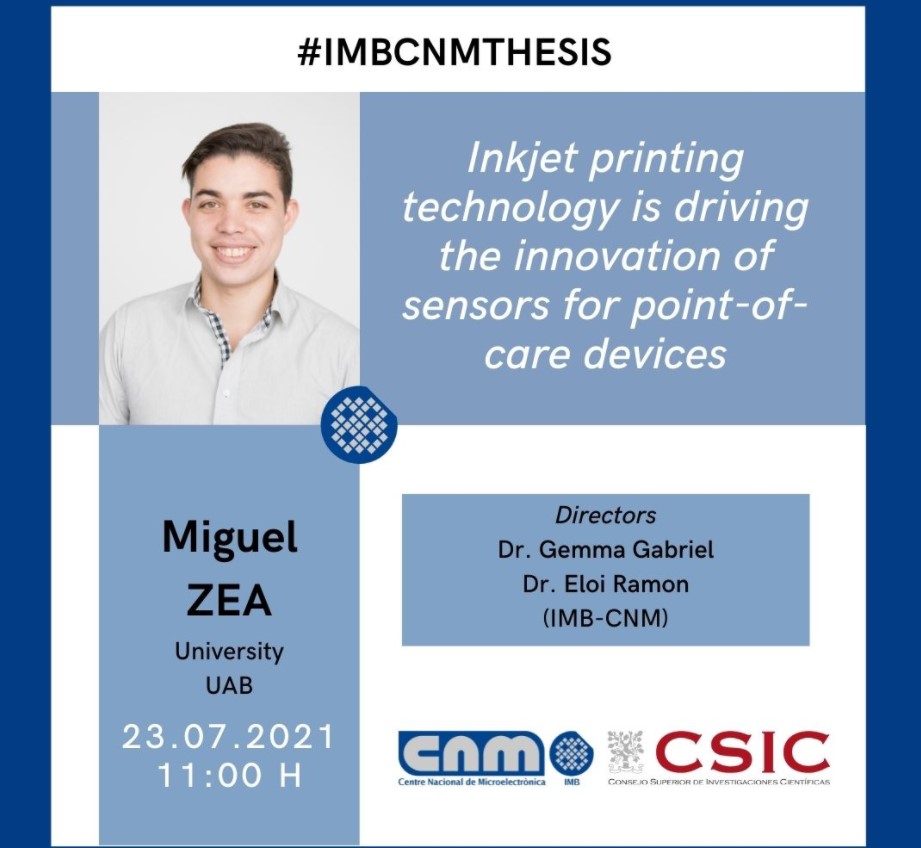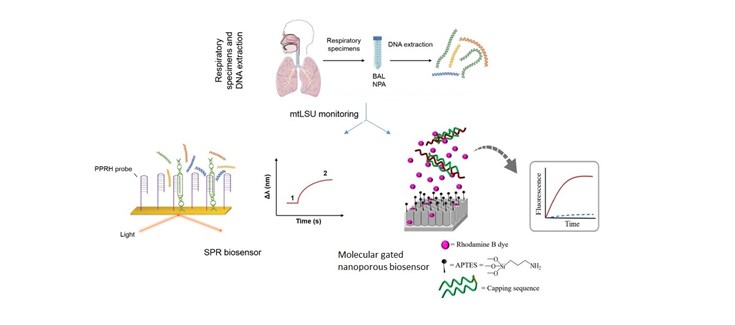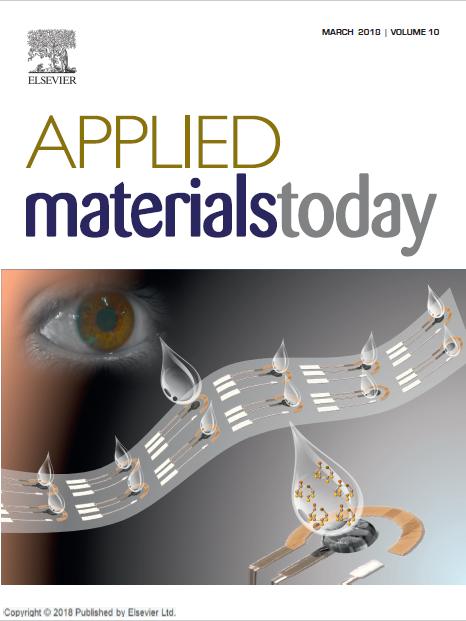Inkjet printing technology is driving innovation of sensors for point-of-care devices
Miguel Zea, researcher at GAB Group – Nanbiosis U8 Micro– Nano Technology Unit will defend hir PhD thesis on Friday 23 of July, at 11 am, at the Graus Room of the Faculty of Sciences and Biosciences of the UAB about “Inkjet printing technology is driving the innovation of sensors for point-of-care devices”
Thesis directors: Gemma Gabriel and Eloi Ramon
Further information and registration for the event, onñine, here
Abstract:
The ‘Inkjet printing’ technology is called to be the next generation of flexible electronics capable of performing functions that were only accessible with state-of-the-art microfabrication technologies. This is due, in part, to the versatility of digital, non-contact patterning techniques but also to the substantial investment in research and development for inkjet printing of functional materials in recent years. Inkjet printing is an additive manufacturing technology based on the contact-less deposition of micro-droplets of a functional material with micrometer precision on the desired substrate area, through a digital design. Moreover, inkjet printing is capable of modifying the printing pattern in real time. Consequently, design changes can be introduced without any additional costs, allowing to create personalized designs with unique features. Nowadays, industrial inkjet printing has reached high standards of flexible, robust, and reliable performances.
The consensus is that inkjet printing will facilitate the production of flexible electronics in a cost-effective, on circular-economy, and reducing waste manner, enabling the development of currently unavailable wearable and disposable devices. This is the point at which Point-of-Care testing devices (PoCT) enter in the equation due to their importance in medical trails. These devices are defined as medical diagnostic testing at or near the patient. PoCT devices rely on a fast and accurate measurement based on sensors that provide the physician with a set of important data to make a diagnosis. However, major limitations of state-of-the-art PoCT devices include cost, disposability, biodegradability, and reliability. Inkjet printing technology offers solutions to address these problems where its great promises are low-cost, non-contact, rapid prototyping, material varieties, and wide range of substrates. Moreover, in the last 15 years, this technology has already shown its potential in the fabrication of reliable and quantitative sensors which form the essential components of PoCT devices. However, our understanding of the technology and its capabilities are still in a promising or potential stage, and further expertise needs to be acquired to facilitate the development of complete fully printed PoCT devices.
Identifying these problems and possible solutions, this thesis focuses on showing the potential of inkjet printing to develop sensors on flexible plastic substrates and porous paper, challenging technology to its current limit. The first part addresses the formulation, printing, and characterization of new functional inks that allow us to obtain new conductive inks to be used in the area of sensing analytes of interest. On flexible plastic, two potentiometric pH sensors have been developed. The first shows the importance of the intrinsic roughness property of a new platinum ink based on nanoparticles to provide mechanical stability to iridium oxide, a pH-sensitive material, grown electrochemically on it. For this purpose, a pH sensor was developed using the new Pt ink and the stability over a year of this iridium oxide layer was studied, which showed a clear improvement in its performance. The second pH sensor goes one step further and is, to date, the first pH sensor entirely fabricated by inkjet printing. To meet this objective, a new polymeric ink was formulated composed of a mixture of polypyrrole and pH-sensitive polyaniline. This ink was printed on a previously printed gold microelectrode and, to finally obtain a fully printed pH sensor, the fabrication was completed with a printed silver/silver chloride pseudo-reference electrode. The second part addresses the challenge of printing a sensor on a more eco-sustainable substrate such as paper, an important factor for disposable PoCs. On any paper substrate, the difficulty in printing is greater due to the porosity, delicacy, and hydrophilicity of this material. In a first work, the challenge of printing conductive functional inks such as gold or silver, and dielectric inks such as SU8 on the substrate in an efficient and easy-to-reproduce way to obtain an electrochemical sensor is addressed. The printing of a new hydrophobic ink that allows to selectively block the area of the paper where the printing of the conductive inks that make up the electrochemical sensor will be required is proposed and studied. Finally, in a second work, a cortisol immunosensor was implemented on these sensors printed on a paper substrate and its response was characterized and compared with other reported sensors, demonstrating the good performance of this technology in the detection of biological target molecules in biological samples.











